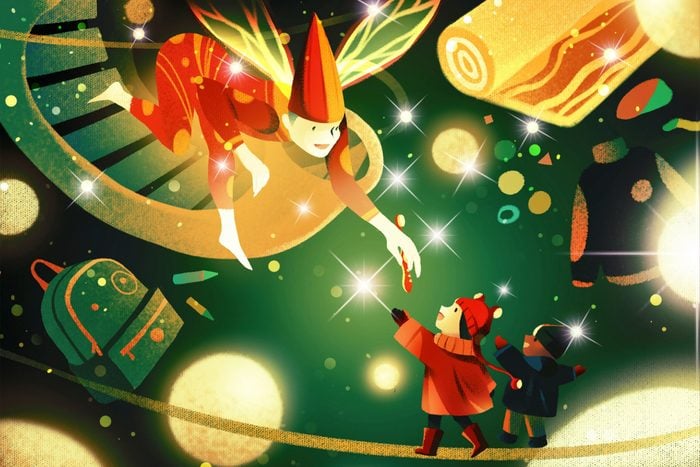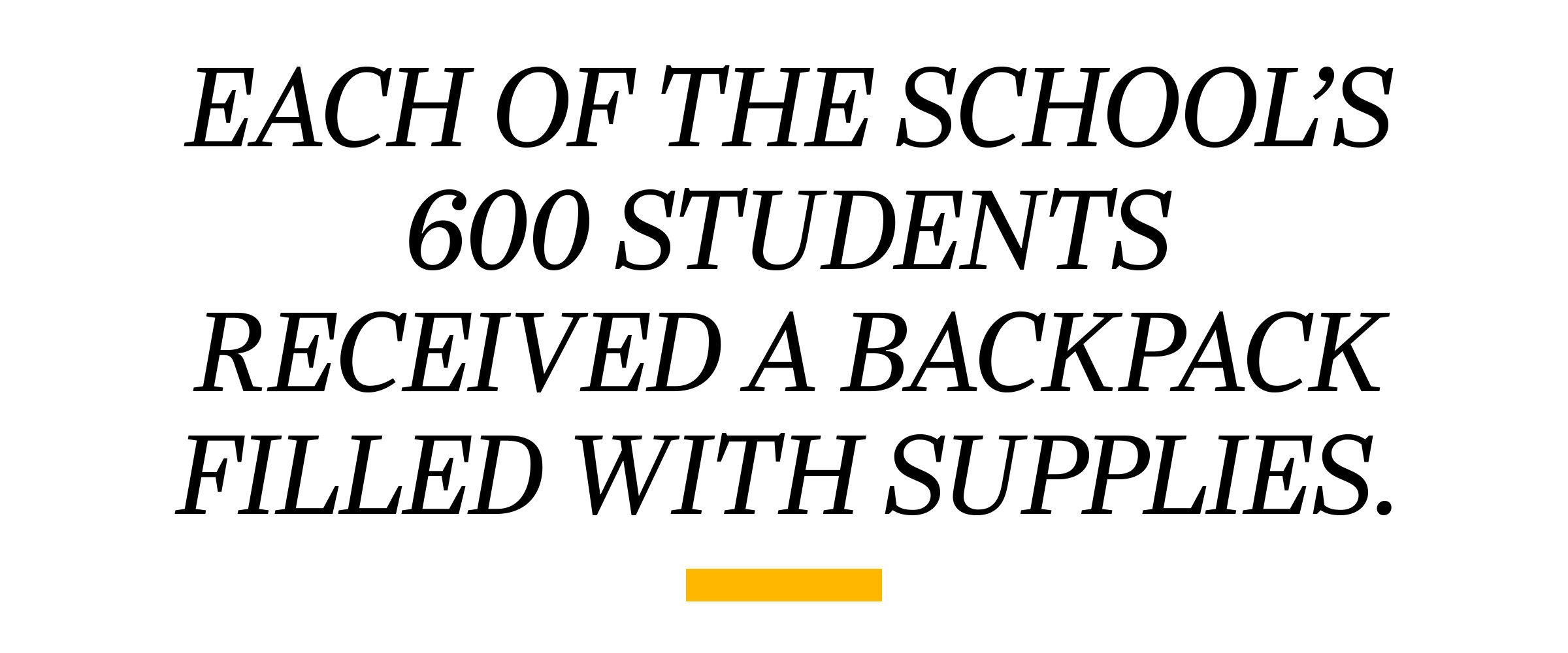Meet the Kind Strangers Who Became Real Christmas Elves to Kids in Need
Updated: Dec. 14, 2023

When local kids needed more than toys, strangers started checking off Santa’s list
For years Jessie the Elf had been a holiday fixture in Stephanie Levinson’s pre-K classroom at San Fernando Elementary School in Los Angeles County. A veteran teacher in a severely disadvantaged neighborhood, Levinson knew that her young students had it rough—some were homeless, many were in foster care, others were crammed into garages or single rooms with eight to ten family members—so she made sure that Jessie, the class’s Elf on the Shelf, was good to them every holiday season.
It was hard to do on a teacher’s salary, but every day from the post-Thanksgiving return until the Christmas break, Jessie managed to bring the kids some little token of holiday magic—a pack of crayons, a pencil, something. No matter how small the gift, Levinson’s students were always grateful. And there was a good chance it would outshine whatever their families could afford to give them. Despite being surrounded by wealthy neighborhoods, their community was so poor that when it rained, kids came to school wearing trash bags. Some didn’t brush their teeth because they didn’t own a toothbrush.
Hard times
Then the pandemic hit, and the district switched to online learning.
Levinson and her colleagues worried that their kids, who received free breakfast, lunch and dinner at school, would go hungry. To their relief, the district announced it would continue distributing meals to the kids and their families. But while food would be taken care of, Zoom opened the educators’ eyes to many other physical hardships their students faced. For Levinson and her colleagues, it was a peek behind the curtains into their students’ home lives—and what they saw broke the teachers’ hearts, especially when the cold weather came around.
One kindergartner spent her daily six hours of Zoom hunkered at the back of a mini-mart while her father worked. Others attended virtual class from motel rooms where their families were temporarily sheltering. On screen, some students had several siblings in the background, all sharing one bed and doing online school for various grades.
And, with the climate-controlled environment of the school building now inaccessible to the students, Levinson began to hear a common complaint. “They would tell me they were cold,” she says. “They’d be trying to type on the computer, and you could see that their little fingers were cold.” It was Southern California, so the temperatures weren’t frigid—but it did drop down into the 40s, and a lot of the kids were working in unheated spaces.
Real-life elves
Levinson knew she had to do something. But on her limited means, how could she possibly keep all her students warm? She created a simple wish list on Amazon: a blanket for each of her 24 students to stave off the cold. On the Nextdoor app, she made a heartfelt plea to the residents of her well-heeled neighborhood: “Help Keep My Students Warm and Bundled on Zoom,” she wrote. She explained the situation, pointed any potential donors toward her Amazon wish list, clicked Send and hoped for the best. Five minutes later she got a text from a neighbor. “I’m looking at your wish list,” the message read, “but there’s nothing there.” Levinson reopened the Amazon page. Just like that, in five minutes flat, her neighbors had fulfilled the wish in its entirety.
Quickly, Levinson reached out to her colleague who taught the school’s other pre-kindergarten class. “Can I add your class?” she asked.
“Sure!”
And just as quickly, the second class was showered with donated blankets. Still more messages came in: “We want to buy. We want to help. There’s nothing there.”
So Levinson looped in a third classroom and kept updating the wish list. How about hoodies for the kids? Scarves? Mittens? Umbrellas? School supplies?

Her plea had gone viral, and in the days that followed, it seemed that whatever she asked for, generous donors—from California to Texas to Pennsylvania—were willing to provide. Levinson had always been touched by how caring and generous her students were.
“That’s not how I grew up,” she confesses. “I would be that little brat, like, ‘How come I’m not getting name-brand?’” But these kids appreciated every little thing.
If they received some small gift, they’d often ask shyly if they could share it with their siblings. If classmates were having a bad day, their little friends would surround them with questions and hugs, seeking to make things better.
So when the donations came pouring in, Jessie the Elf joined Levinson’s Zoom class to deliver an important message: “I hear you’re being good! You’ll be getting rewards soon, and gifts from Santa.”
Such largesse could not have come at a better time. “COVID hit us pretty hard,” says Monique Luna, whose son Nathan was a pre-K student in Ms. Levinson’s Zoom class. “My husband had lost his job. We were in a financial [scrape]. We depended on [those gifts].”
The packages piled up in Levinson’s one-bedroom apartment. With the help of colleagues, she’d sort the donations and carry them to a distribution point for grateful parents to pick up. Often the kids were along for the ride, giving Levinson another chance to reiterate Jessie the Elf’s message: “Jessie brought all these things because you’re working so hard and you’re so kind. She wants you to be warm and happy, because you make her happy every day.” And each new morning, Jessie made her appearance on Zoom to reveal what new reward the kids’ generous behavior had produced.
Giving knows no calendar
Christmas comes but once a year, but giving knows no calendar. As the summer of 2021 drew to a close, and students and teachers prepared to return to in-person schooling, Levinson started hearing from her pool of donors. “We want to help with back-to-school supplies,” they said. “Do you need stuff? Can we help?”
With school supplies as expensive as they were, of course the families needed help. Once again, Levinson put up a wish list, and the response was so overwhelming that she arranged for each of the school’s 600 students to receive a backpack filled with supplies.
For Christmas 2021, the community again came bearing gifts, and Jessie the Elf again did her part by distilling the enormous generosity down to fit a child’s magical worldview. So much stuff poured into the school that the library stood unusable for weeks, piled as it was with packages. Besides the blankets, hats, gloves, scarves, hoodies, umbrellas and backpacks, the kids received unique Christmas gifts like toys, play dough, art supplies, water bottles, fuzzy robes, markers, stuffed animals, books, pajamas, socks, jackets, printers for their classrooms, tablets and more.
Kindness is contagious
A team of lawyers from a nearby company adopted families to Christmas shop for. A tutoring company volunteered its services for free. When a local news channel got wind of all the Santa stories, it triggered a small media frenzy. The kids got used to seeing themselves on TV. “We’re celebrities!” they’d say. Inspired by what had happened at San Fernando Elementary, teachers at other low-income schools in the area put up Amazon wish lists of their own, and they, too, watched the donations pour in.
“Parents were in awe of the generosity of complete strangers,” says Jennifer Valdemar, the school’s assistant principal. At the end of a school day, when cars lined up to collect the kids, she says, it was not uncommon for parents to roll down their windows and ask, “Who can I thank? How can I thank them?”
Monique Luna was one of those parents. “I don’t think there’s enough words,” she says. “There’s not enough thank-you’s to give to them. Especially during the pandemic, when we were all suffering, still there’s somebody willing to help out a random person they don’t even know. I wish there was more I could say or do to thank them.”
But most of the donors were happy to remain anonymous. Like Levinson, they were not in it for the publicity or even for the thanks, but because their hearts couldn’t bear to see kids lacking basic necessities.
For Levinson, one of the great surprises in all this was just who chose to give so selflessly. On neighborhood forums, she says, “There’s so much slander and hate and political stuff. People bashing teachers. But when something like this comes up, everybody jumps in to help, even the people who have been so negative. It’s just beautiful. It’s just absolute community. I’ve cried a lot.”
For the students of San Fernando Elementary School, their universe is simple. “They absolutely, 100 percent believe that Jessie brings all this stuff, and that their kindness is why it’s happening,” Levinson says. “I love that they believe this.”
In the world of a young child, what matters is being kind and caring, looking out for one another, sharing what you have. Jessie the Elf represents a 2,000-year-old narrative in which a severely disadvantaged child—one born to penniless parents in a drafty barn—would go on to teach the world that it’s the children who have it right, that our differences are trivial and love is the thing that matters most. In our troubled times, it’s easy to believe that the lesson has been lost. But it hasn’t. It’s just that sometimes we need the little children to reawaken it in us.


